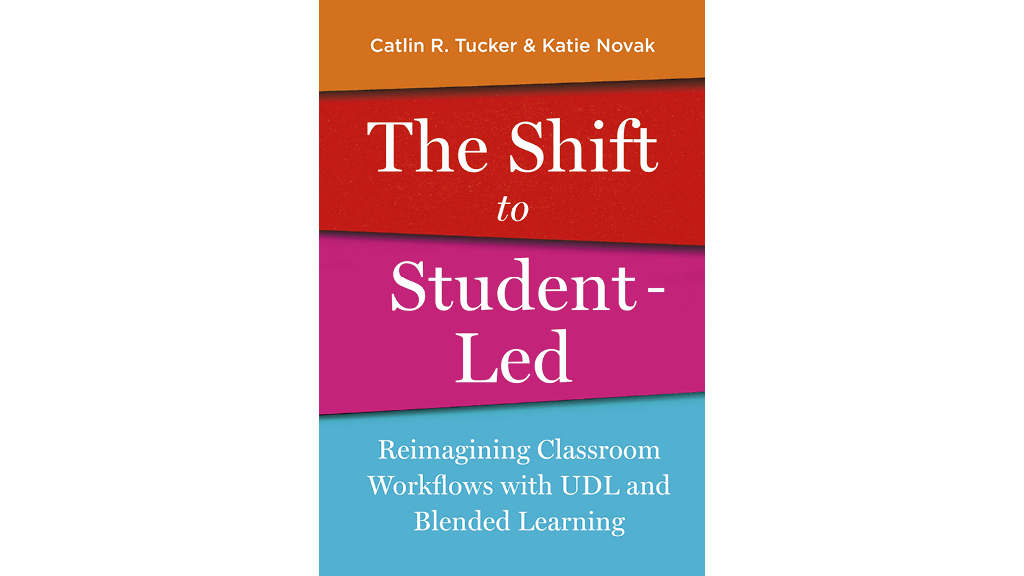
PHOTO COURTESY OF IMPRESS LP
The Shift to Student-Led: Reimagining Classroom Workflows with UDL and Blended Learning by Catlin R. Tucker and Katie Novak is a comprehensive guide for educators seeking student-centered teaching practices. It offers practical strategies for integrating universal design for learning (UDL) and blended learning into classrooms. The book is divided into 10 workflows, categorized into five main sections, providing valuable insights for transitioning to UDL and blended learning.
The first theme, “Preparing for the Shift,” lays the groundwork for the book, introducing the concept of student-led teaching and the significance of embracing student-led teaching in fostering student success.
The second theme, “Shifting to Student-Led,” delves into how teachers can effectively shift their teaching style to a more student-centered approach. The authors offer practical tips, such as designing learning activities that accommodate individual student paces and levels, creating opportunities for student choice and collaboration, and leveraging technology to support learning.
In the third theme, “The Power of UDL,” two critical shifts are presented. First, it encourages moving from formative assessment solely as a teacher tool to empowering students to use it for self-assessment and deeper understanding, fostering a growth mindset. Second, the emphasis shifts from providing feedback solely on finished products to offering it throughout the learning process, enabling real-time adjustments and fostering continuous growth in a student-centered environment.
The fourth theme, titled “The Power of Metacognition,” sheds light on the constraints of traditional assessment models, which hinder students’ sense of responsibility and ownership in their learning process. To cultivate students’ expertise in learning, a crucial shift must occur, with educators transferring the responsibility for reflection and assessment to the learners themselves. By embracing the strategies outlined in this chapter, educators can effectively share the cognitive load of assessment, empowering students to become proactive participants in their own learning journey.
In the final theme, “Fostering Student Agency in Learning,” the book emphasizes empowering students to take ownership of their learning outcomes and initiate progress discussions. Practical advice is given to sustain a student-led, blended learning environment, leading to increased engagement and meaningful educational experiences.
While the book provides a valuable framework for educators, it is essential to acknowledge its limitations. Primarily focusing on the technical aspects of implementing student-led and blended learning, it may not fully address the pedagogical and cultural shifts necessary for successful implementation. Additionally, some challenges and limitations of blended learning, such as the potential for technology to exacerbate existing inequities and the need for ongoing professional development and support for educators, are not extensively discussed.
Debora Saavedra-Winch (dwinch@uncc.edu) is a doctoral student at the University of North Carolina at Charlotte.

Share this content